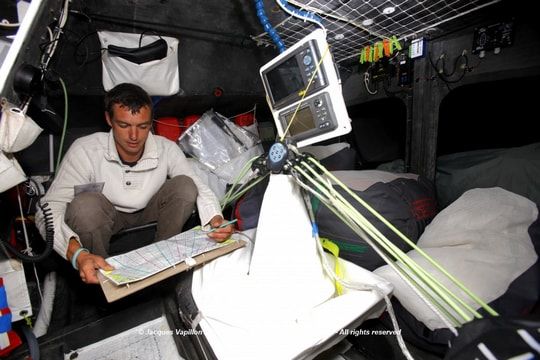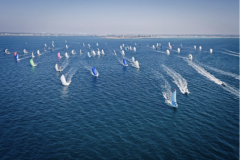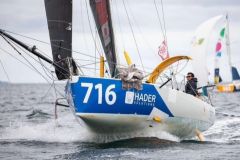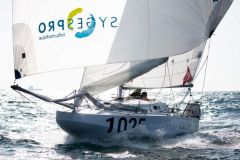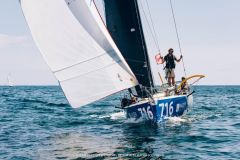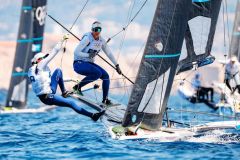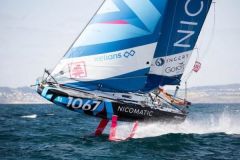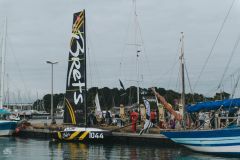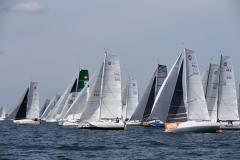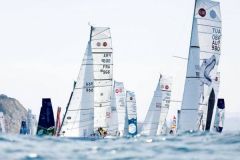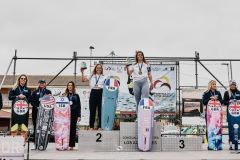The boat, a Mini 6.50
The boat chosen for the Mini Transat will remain the same as in 2013, a Mini 6.50. They are in Port-Rhu since September 9th. The race village has been open since September 11 on the quays of Port-Rhu. On this site, stands welcome the public until the day of the departure of the boats, with tastings, exhibitions, culinary animations, meetings with the racers or films.

This small monohull, 6.50 m long, is three times smaller than the Imoca in the Vendée Globe these boats have a maximum width of 3 meters. They are very powerful and fast boats, especially when sailing downwind (when the wind comes from behind).
Outside, the deck is a few square meters, while inside, it is cramped and the headroom (distance between the bottom of the boat and the cabin ceiling) can be less than 1.40m.
2 rankings
- Length : 6.50 m
- Width : 3 m
- Weight : from 700 to 900 kg
- 7 sails including 1 storm jib
- Average age of Minis: 6.9 years
- Oldest boat : n°240 (1999)
- Most recent boat : n°888 (5 months)
On board, the skippers will have the right to a sextant, 15 nautical charts, 30 to 35 days of food, 87 liters of water and a VHF.
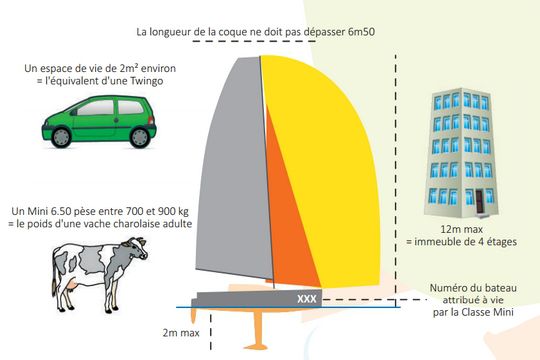
Two rankings
In Mini, there are two classifications: the prototypes built individually, designed for racing and the production boats which were originally designed for a mixed use of racing and cruising.
The prototypes represent the absolute strength of the Mini class. They have served as a laboratory for their skippers, who have invested in creating a boat in their image, by building and even designing their own boat. Technical and demanding, they are at the forefront of ocean racing. It was in the Mini class that tilting keels, adjustable bowsprits and asymmetrical spinnakers were introduced, which were later used on larger boats.
Today, serial boats have become real racing units. To do so, they must be built on the same model, in at least 10 copies. However, they are less sophisticated than the prototypes: carbon is forbidden, fixed keel of 1.60m maximum, ballasts are forbidden, etcâeuros¦
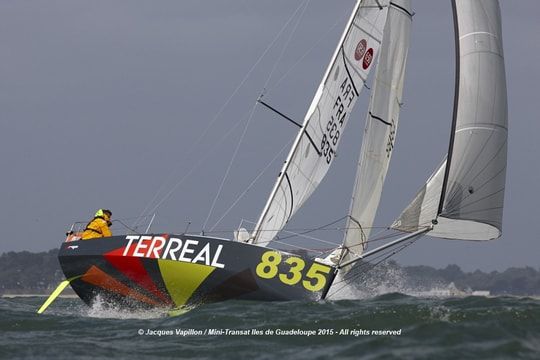
Racers who choose a production boat rather than a prototype are usually sailors who work on the side and do not have the time to invest fully in their boat. But racers are also increasingly interested in this category to compete on equal terms.
The Mini class
It is governed by its members who are often sailors still involved in the class. It sets the rules of measurement, defines the conditions of qualification for the various events and presents the specifications of the events it entrusts to the organizers. Today, the Classe Mini represents nearly 300 sailors of about twenty different nationalities. Its Board of Directors is renewed every year by half.
